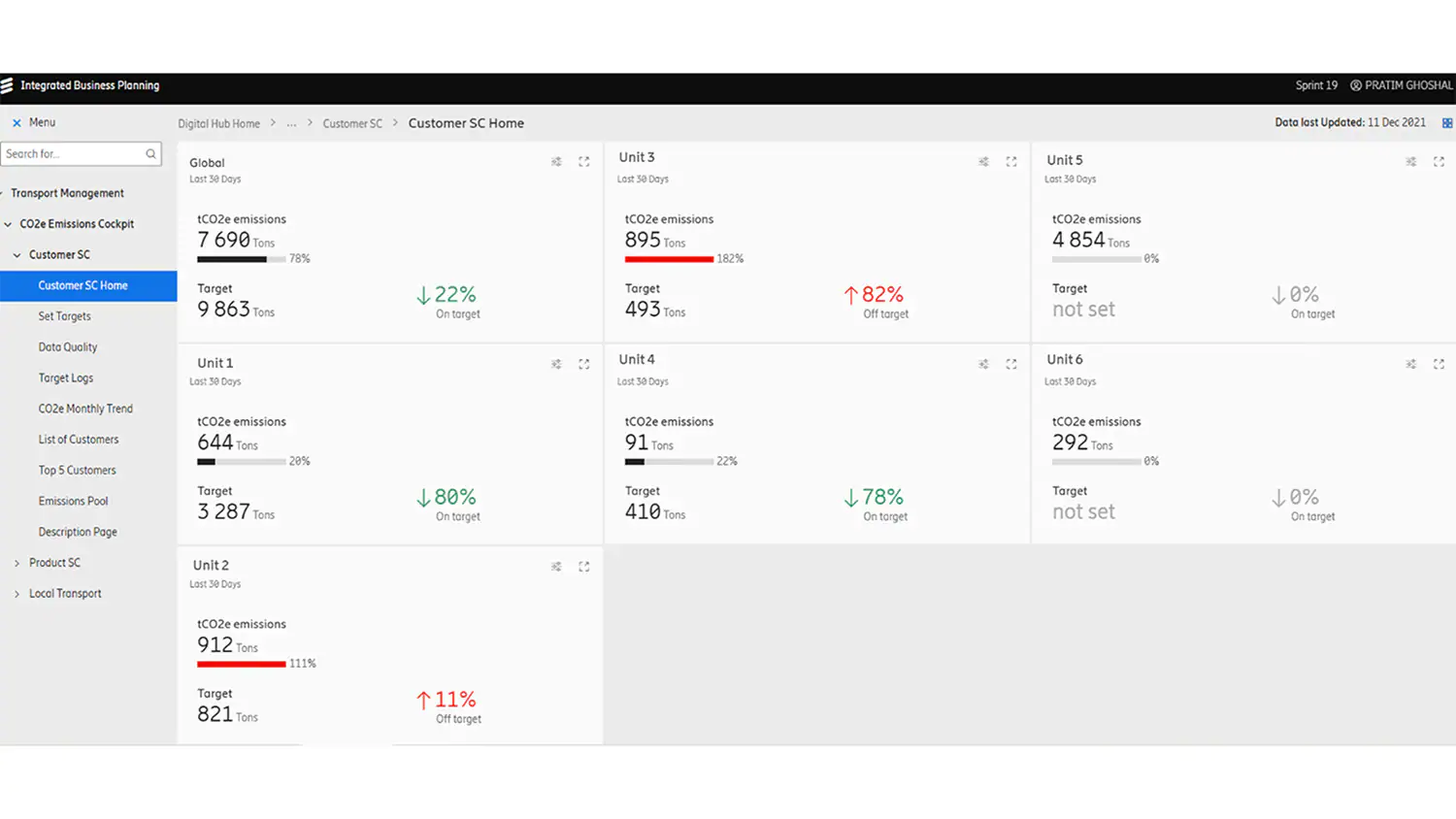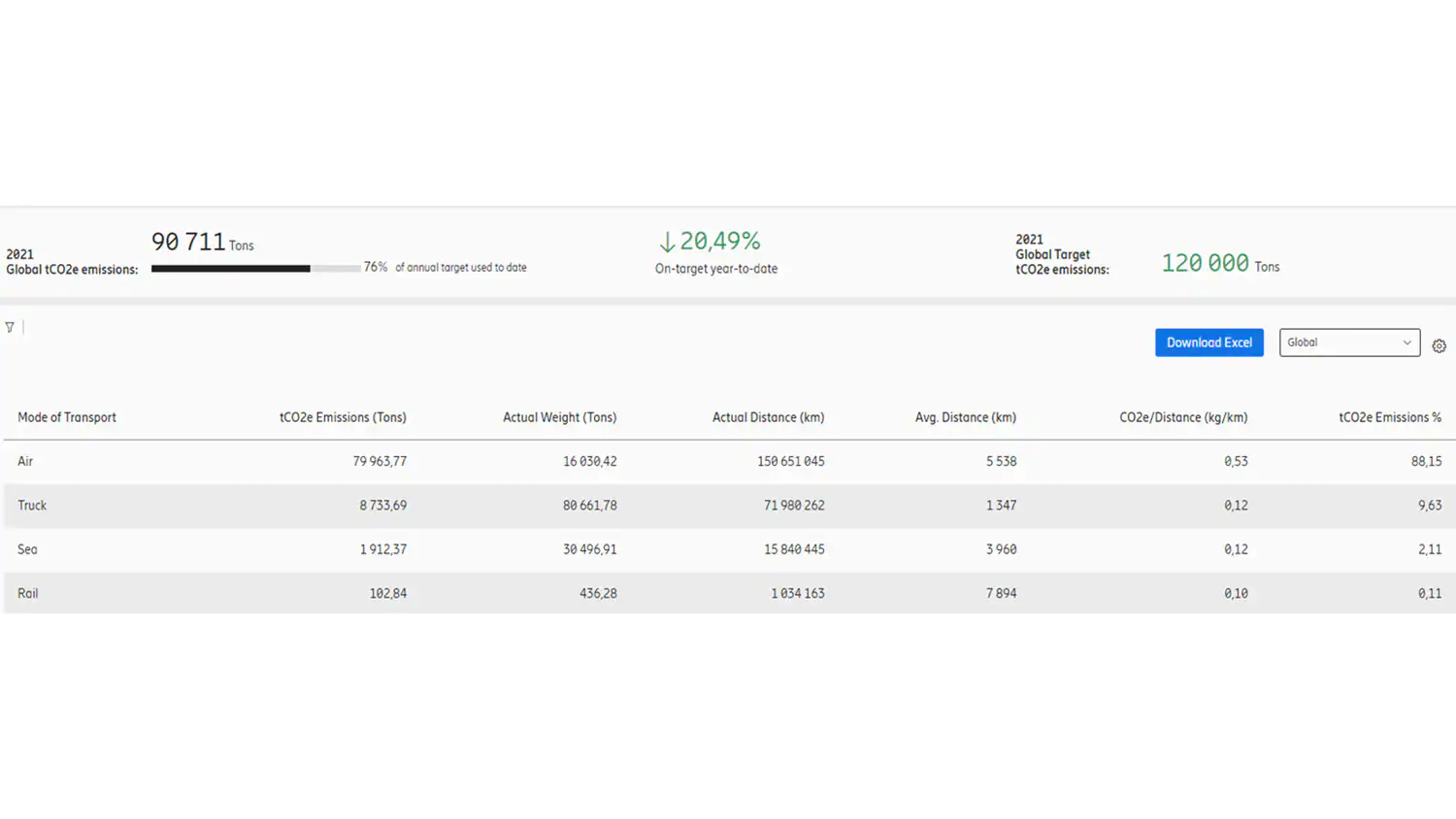Why is it so important?
Proactive management of topics relating to climate action and the environment is a core component of Ericsson’s sustainability strategy. makes up one of three main sustainability focus areas – with the other two being Responsible Business and Digital Inclusion (read more, here).With the growing threat of global warming, the negative impact of carbon emissions is an urgent worldwide concern. The corporate world is making promises to achieve its goal of becoming Net Zero throughout its value chain, and there is increasing pressure on businesses to take climate action and limit global warming. According to the US Environmental Protection Agency climate change report 2019Transportation accounts for 29 per cent of global greenhouse gas emissions. Ericsson is committed to decarbonizing. Ericsson has taken the initiative to tackle this threat by committing to net zero emissions in our value-chain by 2040. Ericsson is already working towards a milestone to reduce emissions by 50% in the supply chain and portfolio by 2030, and to become Net Zero in all of our activities. Product Transportation is one key activity to reduce emissions from the supply chain.
In lieu of the above, and to meet our aggressive goal of reducing in CO2 equivalent emissions, the Group IT AI & Automation experts, along with Supply, have defined a to optimize product transportation – including monitoring, prediction, and reduction – with the ambition of applying AI to make the unimaginable possible.
How to measure and analyse CO2 equivalent emissions from transportation
But how could this strategic plan be implemented to actually make a difference in transport emissions and the areas of business beyond a company’s direct control? First, we needed the information to understand the full extent of supply chain emissions through measurable data and transparent reporting, referred to as the ‘monitoring’ phase.
This phase was used to map the CO2 equivalent emission situation in the organization. It included multiple complex product transport flows such as customer supply chain, product supply chains, local transport, and other processes. The main challenge in creating such a solution was the absence of data, related data and the development of the logic to calculate the CO2 equivalent emissions. We were able calculate the emissions associated to transportation using a variety of analytical techniques, including fuel-based, distance based, and cost-based methods. After many trials and errors, Ericsson Transport Management chose the distance-based method. We calculated the CO2 equivalent emission using a variety of parameters, such as the volume of goods bought, distance traveled, and the standard emission factor for the respective transport mode and/or types. The model was generic enough to be applicable to most similar transport services. The following summarizes the CO2 equivalents calculations across different transport modes:
Y=Σ (mass of goods purchased (tones or volume) × distance travelled in transport leg (km) × emission factor of transport mode or vehicle type (kg CO2e/ton or volume/km))
We were able deploy a complete monitoring solution using the LowCode web portal and the CO2e emission algorithm. Global users can interact simultaneously with the dashboard.

Figure 1: Ericsson Global and Units-wise CO2e emission dashboard. Note that the ll figures are dummy data.

Figure 2: Ericsson Global CO2e Emission Dashboard – Mode of Transportation wise.
We were able not only to measure and monitor C02e emissions in different transport modes but also to improve data quality. The business could identify areas where data quality was low by analysing the data. They could then drive initiatives with data managers to improve the quality and to implement operational measures to capture the right data. This iterative improvement in data quality will eventually help business drivers make judicious decisions.
Transforming data into future insights
With data and basic analysis in hand, the next logical step was to capture important patterns and trends to predict future business, noted as ‘Prediction’ phase.
Due to the large number of freight flows, forecasting shipped volumes and weights for different transportation lanes was difficult. Because of the uncertainty in transportation services, varied processes and non-standardized methods, it was more difficult to plan optimal transportation resources and distribution.
Machine learning (ML), which uses historical and transactional information, allowed us to develop a more accurate long-term as well as short-term shipping weight forecast than we could with manual predictions.
These techniques not only reduce the need for manually generated forecasts but also allow Logistic Service Providers or LSPs to have better delivery precision, which results in lower rates and therefore lower costs. The forecast will ensure that transport capacity is available and reduce lead time.
LSPs can use a forecast to identify key drivers of shipment freights across regions, transport lanes, and the impact on the product transport chain.
The modeling portion of the solution is composed of multiple boosting algorithm with different hyperparameter tunings on features such as learning rate, max_depth or n_estimators. Because of the volatility and inconsistencies in data, no single model can produce results. Therefore, a group of machine learning models with different hyperparameters was created. The framework was designed so that the best models, for tech-savvy people, would be picked up in dynamic mode during runtime. This would then be used to forecast the weight/volume.
Prediction to actions – Reduction phase
After measuring and analyzing the results of CO2e emissions and having good long and short-term forecast, it is now time to prepare plans and implement methods to reduce the CO2e emissions, also known as the ‘Reduction’ phase.
Monitoring and forecasting are two key elements in the continuous optimization of CO2e emissions.
- Transport activities: reducing and improving
- Fleet Optimization – Higher filling degree in trucks, reduce unnecessary air shipments, and updated fleet.
- Better collaboration with suppliers, improved planning of packaging and transportation material
- Transport efficiency improvement
- Forecasting can help you avoid short lead times by avoiding forecasting
- Use well-organized navigation
- Predictive analytics to help prevent vehicle failure and save energy (Predictive Maintenance).
In shortThe logistics transport sector is one of the main consumers of fossil fuels, and is therefore a major contributor to the total greenhouse gas (GhG) emissions, accounting for of total GhG emissions, as per the US Environmental Protection Agency climate change report 2019. Our own experience has shown that AI can be used for reducing the use of transport vehicles. It optimizes the flow of vehicles, provides more efficient navigation, and facilitates shared transportation.
Based on our insights on the potential of AI and the ongoing development in industry automation, this blog post has highlighted our three-phase strategic approach – Monitoring, Prediction, and Reduction.
Transport volume forecasting is designed to reduce CO2e and operational expenses.
This three-phase approach to Environmental Sustainability could be combined with domain knowledge. AI can be a powerful tool to accelerate our sustainability efforts if used in a responsible manner.
AI is already proving to be the key to empowering individuals, governments, and organizations to make better decisions and contribute to a healthier planet. Ericsson is working towards this goal and we are proud to show how AI applied can make a positive change.
The gravity of climate change together with artificial intelligence’s potential makes it too essential not to try, don’t you think?
Learn more
Please visit this page for more AI/ML cases Artificial Intelligence/Machine Learning – Internal link

